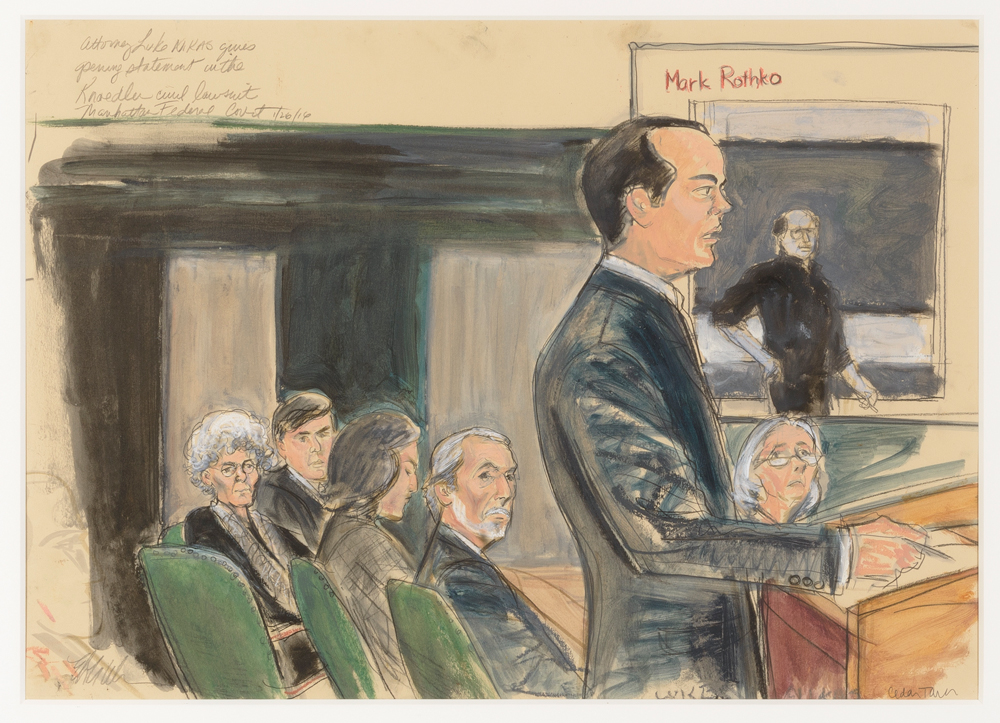The Knoedler Gallery Case
In 2011 the art world was shocked as Knoedler & Company, one of the oldest and most reputable galleries in New York, closed after being accused of selling $60 million worth of forged paintings purported to be the work of important Abstract Expressionists such as Mark Rothko, Robert Motherwell, and Jackson Pollock. Ten former Knoedler clients brought civil suits alleging that the gallery and certain employees should have known the works were forgeries. To date, nine of the suits against Ann Freedman (then director of Knoedler & Co.) and seven of the cases against Knoedler & Co. have been settled for undisclosed sums.
The lack of authenticity of the paintings has been well established. Over a fourteen-year period, 31 Abstract Expressionist paintings were sold to Knoedler and another gallery in New York by Glafira Rosales, a Long Island art dealer who claimed to be representing an anonymous collector referred to only as "Mr. X." Knoedler then sold 24 of these works. It is now known that they were all painted by the same man, Pei-Shen Qian (b. China, ca. 1941), an artist then living in Queens. In 2013 Rosales pled guilty to charges of wire fraud, money laundering, and tax evasion. On January 1, 2017, she was sentenced to time served (three months in jail), home detention (ninety days), and supervised release (three years) and was ordered to pay restitution. Her co-conspirators have fled the country, and it is uncertain whether any of them will be extradited.
The Issue of Intent
Ann Freedman is a passionate collector herself and acquired several of the paintings sold by Rosales. She contends that she asked the opinion of experts, who believed the works were genuine, and noted that if she had any concerns about the authenticity of the paintings, she would not have purchased them for her own collection. By contrast, the other purchasers maintain that the number of works, the huge profit margins made on the sales, and the mysterious story cited as their provenance were "red flags" of inauthenticity that Knoedler & Co. improperly ignored.
This case raises important questions about fakes and forgeries. Should Knoedler have been more suspicious? Should the purchasers and their own art advisors have investigated the authenticity of the paintings themselves? Were the opinions of the experts Knoedler consulted adequate enough to constitute due diligence? This case also has wider implications concerning the lack of transparency in the art market in general.
This was the first Abstract Expressionist painting Glafira Rosales brought to the Knoedler Gallery. She claimed it was owned by an old family friend, a collector who wanted to remain anonymous. Many people believe that the lack of a clear history of ownership (provenance) should have caused Knoedler staff to question the authenticity of the painting. Knoedler and Ann Freedman claim, however, that they relied on positive opinions from experts in the field.
Scientific analysis did not identify any anachronistic pigment in this painting, but the signature was toned with a yellow color, probably in an attempt to make it appear older than it was.
Painting in the style of Mark Rothko
Pei-Shen Qian
Courtesy of Luke Nikas
Courtroom sketch
Photography is not allowed in courtrooms. This artist’s sketch shows Ann Freedman’s lawyer, Luke Nikas, in court with his client, president and director of Knoedler & Co., sitting behind him. Nikas is presenting his opening statement to the jury at the beginning of the trial against Knoedler and Freedman in the United States District Court for the Southern District of New York.
Opening Statement by Luke Nikas who represents Ann Freedman
2016
© Elizabeth Williams
Bibliography
Gilbert, Laura and Bill Glass. "Ann Freedman, former Knoedler director, settles final lawsuit." The Art Newspaper, September 11, 2017. https://www.theartnewspaper.com/news/ann-freedman-former-knoedler-director-settles-final-lawsuit
Miller, M. H. “The Big Fake: Behind the Scenes of Knoedler Gallery’s Downfall.” ARTNEWS, April 25, 2016. http://www.artnews.com/2016/04/25/the-big-fake-behind-the-scenes-of-knoedler-gallerys-downfall/
Moynihan, Colin. “Knoedler Gallery and Collectors Settle Case Over Fake Rothko.” New York Times, February 10, 2016.https://www.nytimes.com/2016/02/11/arts/design/knoedler-gallery-and-collectors-settle-case-overfake-rothko.html
Smith, Jennifer. “Knoedler & Co. Gallery Settles Art-Fraud Case.” Wall Street Journal, February 10, 2016. http://www.wsj.com/articles/knoedler-co-gallery-settles-art-fraud-case-1455120395


